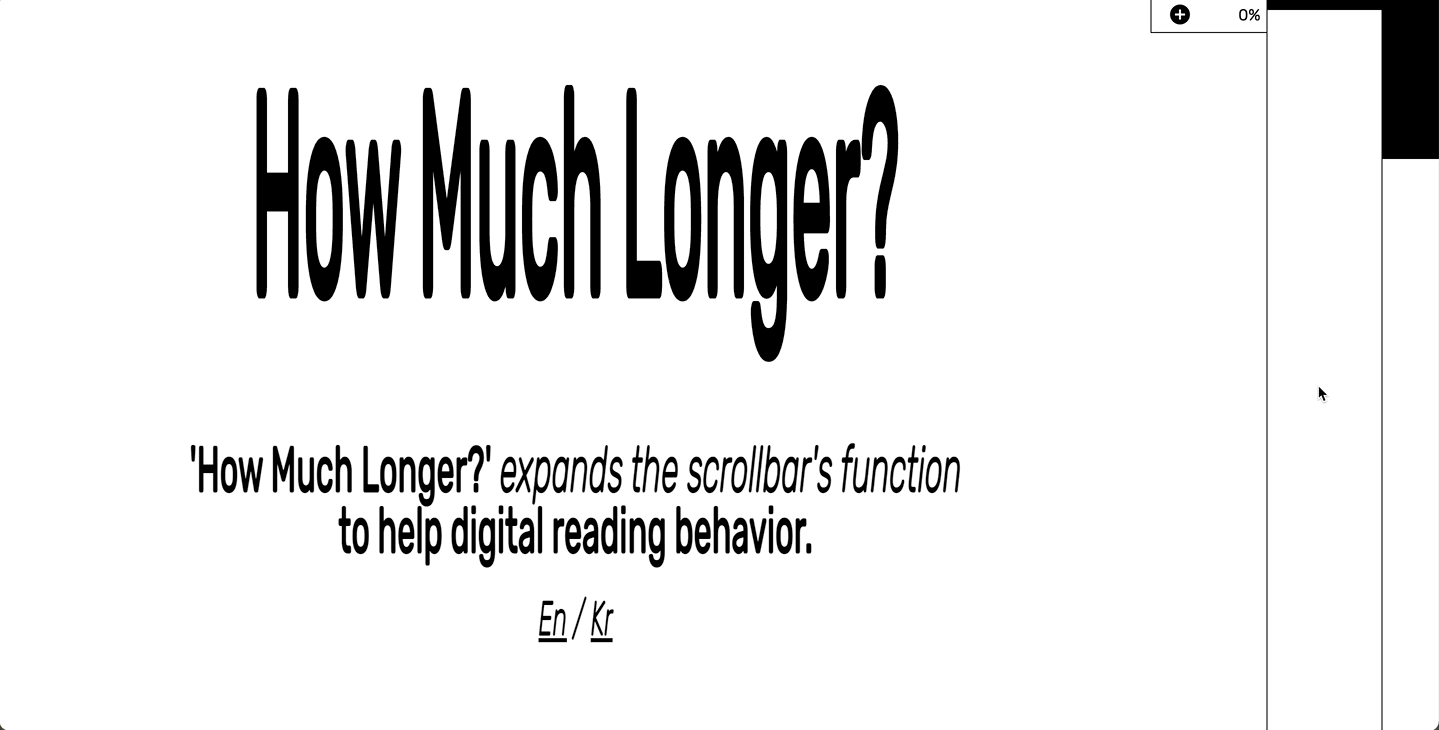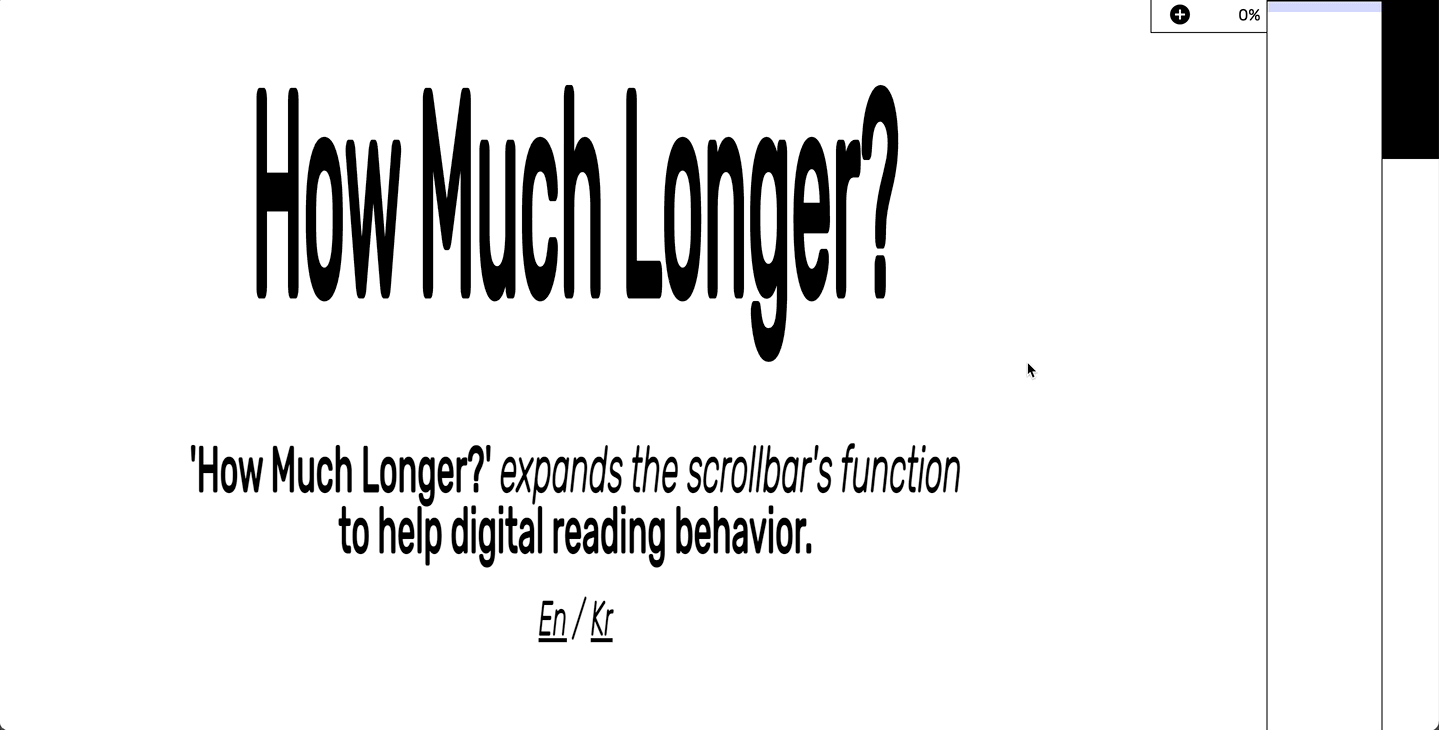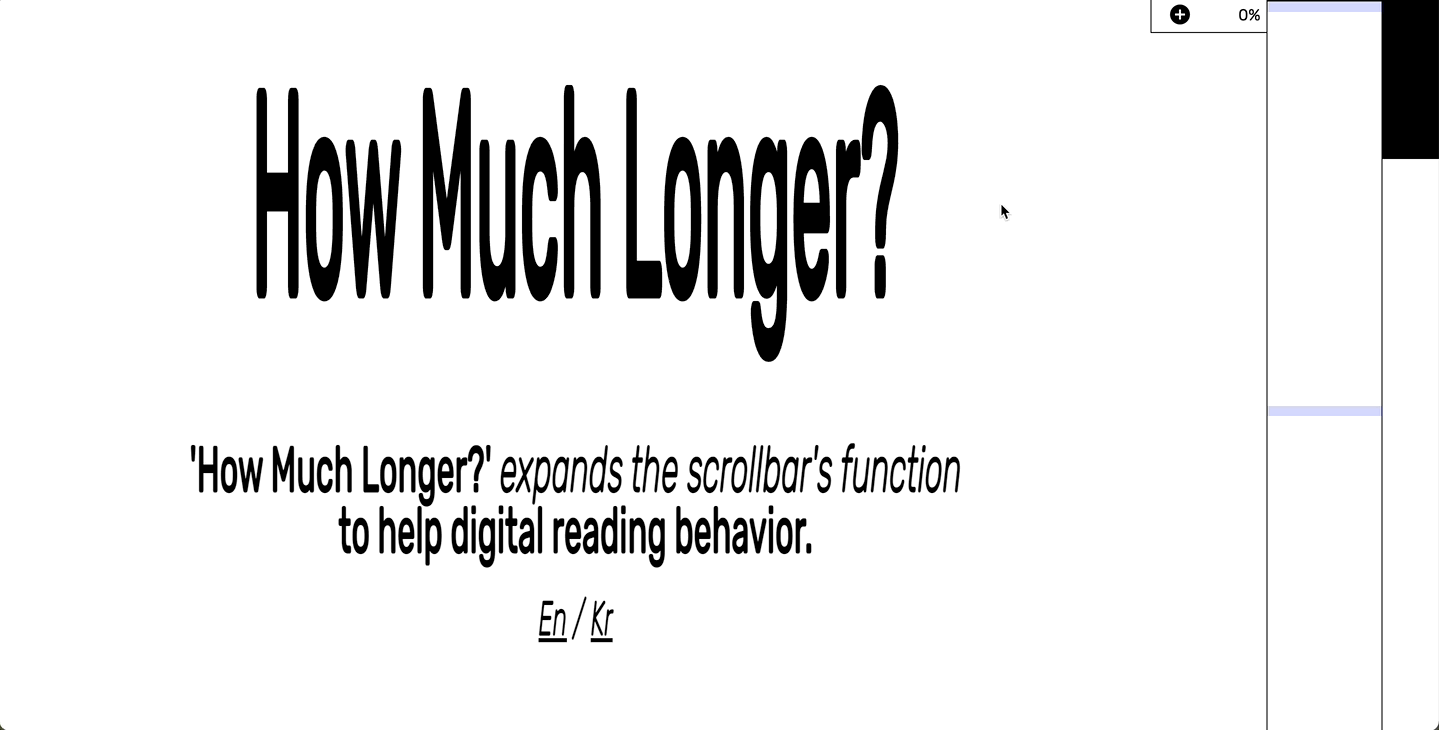How Much Longer?
'How Much Longer?' expands the scrollbar's function
to help digital reading behavior.
En / Kr
How it Started
This project started from the inconvenience of reading text on digital, especially desktop computer.
In general, digital text is in either PDF or non-PDF format, or it falls at a crossroads. For all that, even if the file format is not necessarily PDF, the metaphor of ‘page’ in it transcends and exists alive in any format(or software). And the familiar proportions of the 'vertical standard' (A4, A3, B5 …) page metaphor maximizes hostility when it faced with a desktop computer with a long width. This is why I think infinite scrolling without page division is more suitable for plain digital text. However, in the case of 'infinity scrolling', the biggest problem is that the sense of how much — and how much longer — of reading is paralyzed.
So What is it?
'How Much Longer?' is a draft of software that expands the scrollbar's function to help digital reading behavior. It started with the idea that the important viewpoint in digital text reading and its form(software) is not to transmit forms such as book, paper and pages, but to transfer only the 'sense' in the previous reading act.
A scroll bar is an important built-in function that is inseparable from a fixed-size screen and the text in it. By focusing on it, this proposed software expands the function of scrollbar as an axis — semantically and practically — that implying a concept of ‘HOW MUCH’ to allow the sensory perception of time, distance, and position.
The work answers the following questions: What kind of collapse and abandonment is the current digital reading behavior built on? How to do ‘Pagination’ in a system based on Infinite Scrolling? Where and how to display index?
Demo Function
-
Fixed Height Scroll Handle
 Scroll, or click on Scrollbar
Scroll, or click on Scrollbar
The handle of a typical browser built-in scrollbar changes its height in proportion to the total length of the document. It's the scroll bar on the far right. Here, a scrollbar that works on a different principle is added to the left.
By making the scroll handle a fixed height that can be replaced with a line, it is possible to more accurately determine how much you are currently reading in the actual percentile when reading (regardless of the length of the document). Therefore, the reader can roughly grasp the length of documents through the built-in (variable height principle) scroll bar on the far right before reading, and while reading, accurately and naturally 'how much' they are reading through the fixed-height scroll handle on the left. In addition for those who prefer to remember numbers, the actual percentage of scrolling is also displayed at the top.
-
Marker (Bookmark)
 Long Click on Scrollbar.
Long Click on Scrollbar.
In a real book, the pages of the book are stacked to form the sides of the book. It is a principle in which a kind of line (paper) is gathered to form a plane. Therefore, we can mark a specific point in the book - one certain page, one line - and record it. Imagine elongating the sides of a book. Naturally, you can assign it to a ‘fixed-height handle’ scrollbar. It is just not segmented in page, but connected in a single bar.
A marker is added by long-clicking on a specific location on the scroll bar. Because the scroll handle is a line rather than a plane, and has a smaller and more accurate location information value, it can act as an accurate navigation like a bookmark. When the user clicks on a marker, the document scrolls to that part.
-
Document Clipping
 1. Mouse hover at button at the top.
1. Mouse hover at button at the top.
2. Enter the start and ending point percentage in blank and press the button.What if you want to read only part of a document, or if you want to separate and categorize a document? What if one wants to crop a only part of a document and enlarge it to read it?
As mentioned, the scrollbar is a timeline. What to do is to understand documents in terms of volume and time, not pages. Then, it can be used by designating from a certain point in time to a other certain point, cutting it out and displaying it.